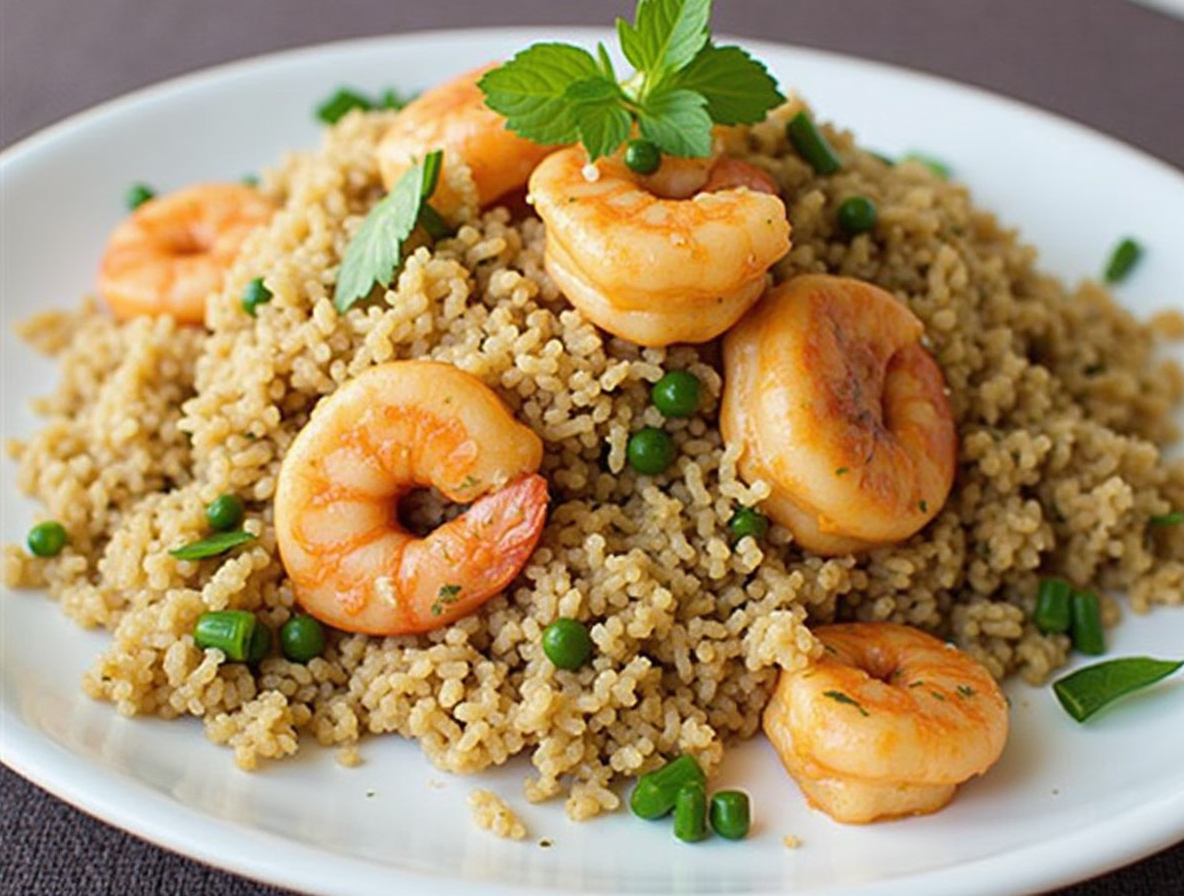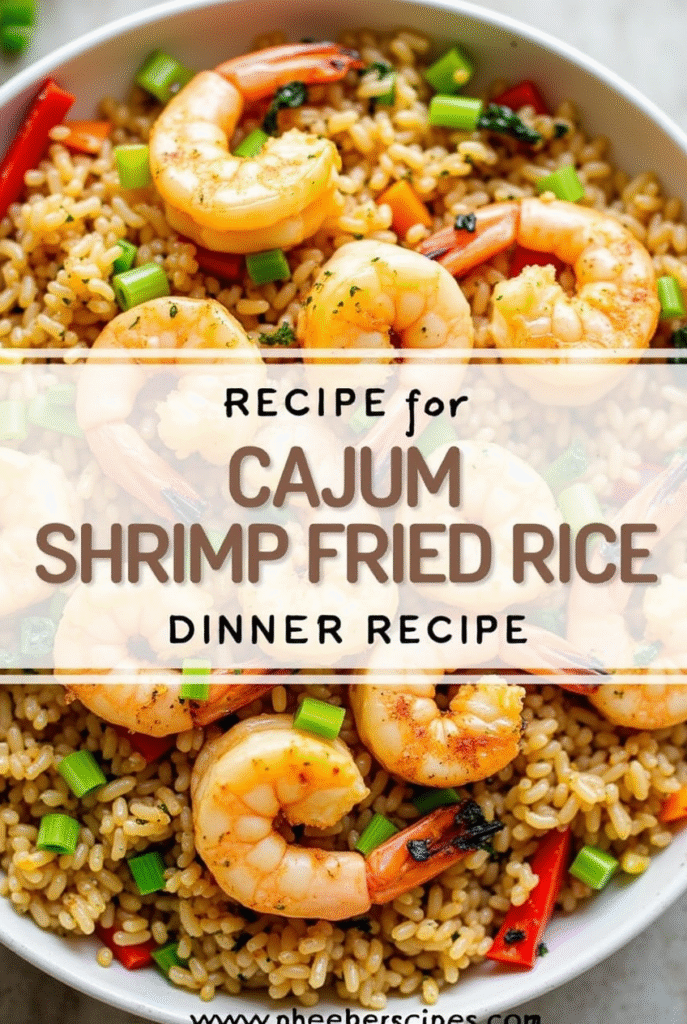Perfect Cajun Shrimp and Rice Recipe: A Chef’s Secret Method
Cajun shrimp and rice recipe enthusiasts know that this vibrant dish delivers bold flavors without demanding hours in the kitchen. As a chef who appreciates efficiency without sacrificing taste, I’ve found this meal can be ready in approximately 30 minutes, making it perfect for busy weeknights while still impressive enough for guests.
The beauty of cajun shrimp fried rice lies in its celebration of taste and texture. Typically, we use about one pound of fresh, plump shrimp combined with a chunky blend of bell peppers, onions, and garlic. This cajun rice and shrimp dish has roots in Acadian culture, which migrated from Canada to Louisiana in the 1700s, eventually developing into the bold, heavily seasoned cuisine we love today. Additionally, our cajun shrimp and rice recipes incorporate a signature spice blend featuring paprika, garlic powder, onion powder, and dried oregano – staples that define authentic Cajun cooking.
In this guide, I’ll share my secret method for creating the perfect cajun shrimp fried rice recipe that serves 4 people. Whether you’re cooking for family or hosting a small gathering, this gluten-free option promises to deliver restaurant-quality results with surprisingly little effort.
Choosing the Right Ingredients for Cajun Shrimp and Rice
The secret to making an exceptional cajun shrimp and rice recipe starts with selecting top-quality ingredients. Each component plays a crucial role in building the dish’s distinctive flavor profile.
Shrimp: fresh vs frozen
Contrary to popular belief, frozen shrimp often delivers better quality than “fresh” shrimp at seafood counters, which was likely previously frozen anyway. For superior flavor and texture, I prefer buying frozen shrimp and defrosting them just before cooking. Within 24 hours of thawing, shrimp muscle tissue begins to degrade, so timing matters. Look for wild-caught shrimp rather than farm-raised – they taste significantly better due to their natural diet of algae. Size-wise, large shrimp (16-20 count per pound) work best, maintaining juiciness throughout cooking. When shopping, check that “shrimp” is the only ingredient listed to avoid salt or chemical additives like sodium tripolyphosphate (STPP).
Best rice types for texture
The perfect rice makes all the difference in cajun shrimp fried rice recipe. Long-grain white rice is traditional, but I’ve found basmati and jasmine rice offer excellent alternatives. Basmati provides a nutty flavor with more defined, distinct grains, while jasmine creates a slightly creamier consistency with grains that stick together more. For optimal results, rinse your rice under cold water before cooking to remove excess starch and prevent clumping. Brown rice works too if you prefer more fiber, though you’ll need to adjust cooking times accordingly.
Vegetables that enhance flavor
Every authentic cajun shrimp and rice recipe features the “holy trinity” of Cajun cuisine:
- Onion (2 parts)
- Bell pepper (1 part)
- Celery (1 part)
This aromatic combination forms the foundation of flavor, similar to French mirepoix but substituting bell pepper for carrots. For additional depth, minced garlic is essential. While green bell pepper is traditional, red pepper adds a pleasant sweetness that balances the spice.
Optional add-ins: sausage, tomatoes, herbs
To elevate your cajun rice and shrimp dish, consider including andouille sausage for authentic Cajun flavor. It adds juicy, spicy notes that complement the shrimp beautifully. For tomatoes, fire-roasted diced tomatoes provide complex sweetness with less acidity than regular ones. Fresh parsley makes an excellent finishing herb, while bay leaves enhance the overall flavor profile. For a complete meal, try adding corn, zucchini, or peas as extra vegetables.
How to Make Cajun Shrimp and Rice Step-by-Step
Making the perfect cajun shrimp and rice recipe involves a systematic approach that ensures each element reaches its optimal flavor. Let me walk you through my chef-tested method for creating this southern classic.
1. Prepare the Cajun seasoning
First, create your own signature Cajun blend by whisking together:
- 1 tablespoon smoked paprika
- 1 teaspoon sea salt
- 1 teaspoon garlic powder
- 1 teaspoon onion powder
- 1 teaspoon dried oregano
- ½ teaspoon black pepper
- ½ teaspoon cayenne (adjust according to heat preference)
Homemade seasoning delivers far superior results compared to store-bought alternatives. Furthermore, this allows you to customize the heat level to suit your palate.
2. Sauté aromatics and rice
Next, melt 2 tablespoons of butter in a large skillet over medium heat. Add diced onions and bell peppers, cooking until softened (approximately 3-4 minutes). Afterward, incorporate minced garlic and cook for another minute. This aromatic base forms the foundation of authentic cajun shrimp fried rice.
Once vegetables are tender, add uncooked rice and a tablespoon of your prepared Cajun seasoning. Toast the rice for about a minute – this crucial step develops a protective outer shell that preserves texture during cooking.
3. Cook shrimp separately
Meanwhile, season your shrimp with the remaining Cajun spice blend. In a separate non-stick skillet, melt 2 tablespoons butter over high heat. Once melted, arrange shrimp in a single layer and cook for 2-3 minutes per side until pink and opaque. Be careful not to overcook as this leads to rubbery texture.
4. Combine and simmer
Pour chicken broth into the rice mixture and bring to a boil. Subsequently, reduce heat to low, cover with a tight-fitting lid, and simmer for 15-20 minutes until rice is tender and liquid is absorbed.
5. Final touches before serving
Finally, gently fold the cooked shrimp into the rice mixture. For extra brightness, squeeze fresh lemon juice over the dish and garnish with chopped fresh parsley or sliced green onions. This cajun rice and shrimp creation tastes best served immediately, though leftovers can be stored refrigerated for up to three days.
Secrets to Perfect Cajun Seasoning
The magic behind any authentic cajun shrimp and rice recipe lies in its seasoning. As a passionate chef, I’ve discovered that understanding the fundamentals of Cajun spice blends can transform an ordinary dish into something truly memorable.
Key spices in Cajun blends
The backbone of every Cajun seasoning consists of several essential ingredients that create its distinctive earthy, bold flavor profile. Most traditional blends include:
- Paprika: Provides the earthy foundation and rich color (typically 2-3 tablespoons in a batch)
- Cayenne pepper: Delivers the characteristic heat (½-1 tablespoon depending on desired spiciness)
- Garlic powder: Offers savory depth (1-2 tablespoons)
- Onion powder: Adds aromatic sweetness (1-2 tablespoons)
- Black pepper: Contributes piquant fruitiness
- Dried herbs: Typically oregano and thyme for herbal complexity
Interestingly, many chefs consider paprika the non-negotiable ingredient that gives cajun shrimp fried rice its distinctive color and smoky character.
How to balance heat and flavor
The secret to perfect Cajun seasoning lies in achieving harmony between spiciness and flavor. Essentially, cayenne pepper controls the heat level—start with less and adjust upward for your preferred intensity. For milder cajun shrimp rice recipes, simply reduce the cayenne while maintaining other spice proportions.
Salt deserves special consideration; instead of incorporating it directly into your blend, consider adding it separately to each dish. This approach provides greater control over sodium levels and prevents oversalting.
Dried herbs require balance too—they should complement rather than overwhelm the spices. Typically, the ratio of paprika to herbs should be about 3:1 for authentic flavor.
Making your own vs store-bought
Homemade Cajun seasoning offers significant advantages for your cajun rice and shrimp creations. First, you control both saltiness and spiciness, tailoring the blend to your exact preferences. Certainly, freshly mixed spices deliver more vibrant flavors than mass-produced alternatives.
Store-bought options vary widely in quality. If convenience is necessary, look for brands like Slap Ya Mama (known for intense pepper flavor) or Cajun Island Blackening Spice (offering traditional flavors). Nonetheless, these commercial blends often contain more salt and fewer herbs than homemade versions.
Properly stored homemade Cajun seasoning remains potent for up to one year, although peak flavor lasts about three months. For best results, mix smaller batches frequently rather than creating large quantities that lose potency over time.
Tips for Customizing and Serving the Dish
Customization is key to making this cajun shrimp and rice recipe truly your own, with endless possibilities for add-ins and accompaniments. Moreover, knowing how to properly store and reheat leftovers ensures you can enjoy this dish multiple times without sacrificing flavor or texture.
Add-ins: sausage, veggies, or pineapple
The beauty of cajun shrimp fried rice lies in its adaptability. For additional protein, andouille sausage makes an authentic choice that adds spicy, smoky notes to complement the shrimp. Likewise, kielbasa offers a milder alternative that still provides rich flavor. For those seeking extra texture, crispy bacon incorporates both salt and satisfying crunch.
Vegetable options extend far beyond the traditional “holy trinity.” Indeed, many home cooks enhance their cajun rice and shrimp with:
- Black beans and corn (added when tomatoes are incorporated)
- Diced avocado for creamy contrast
- Peas, zucchini or carrots for color and nutrition
- Diced bell peppers in various colors
Serving suggestions and wine pairings
This cajun shrimp rice recipe stands perfectly on its own, yet pairing it with complementary sides elevates the meal. Specifically, serve alongside honey cornbread muffins whose sweetness balances the dish’s spiciness. Fresh, crisp salads like cucumber tomato or southwestern bean salad provide refreshing contrast to the rich main course.
For wine enthusiasts, Cajun cuisine presents interesting pairing challenges. Generally, avoid high-tannin reds like Cabernet Sauvignon that overwhelm rather than complement. Instead, opt for light, fruit-forward reds such as Grenache or Pinot Noir. Alternatively, aromatic whites like Viognier or Riesling combat heat beautifully while enhancing flavor.
Storage and reheating tips
Properly stored in airtight containers, cajun shrimp and rice keeps in the refrigerator for 3-4 days. For longer preservation, freeze for up to 3 months, ensuring complete thawing before reheating.
The key to successfully reheating this dish is gentleness. Consequently, warm on the stovetop over medium-low heat until just heated through. For microwave users, reheat in short 15-20 second intervals, stirring between each to prevent rubbery shrimp. In particular, a makeshift double boiler provides even heat distribution without harsh direct heat that often overcooks seafood.
Conclusion
Cajun shrimp and rice stands as a versatile, flavorful dish that combines bold seasoning with quality ingredients. Throughout this guide, we’ve explored how selecting the right components—from properly defrosted shrimp to the perfect rice variety—creates the foundation for an exceptional meal. The “holy trinity” of Cajun cuisine certainly forms the aromatic base that distinguishes this dish from other rice preparations.
Making your own Cajun seasoning undoubtedly elevates the entire experience. This homemade blend allows precise control over heat levels while delivering fresher, more vibrant flavors than store-bought alternatives. Thus, your cajun shrimp and rice becomes uniquely yours rather than a generic interpretation.
The step-by-step method shared here reflects years of perfecting this recipe. First, build your flavor base with aromatics. Then, toast the rice before adding liquid. Finally, cook shrimp separately to prevent overcooking. These techniques, albeit simple, make all the difference between an ordinary meal and a chef-quality creation.
Customization options abound with this dish. Whether you prefer adding andouille sausage for authenticity or incorporating extra vegetables for nutrition, this recipe adapts beautifully to your preferences. Likewise, the wine pairing suggestions offer ways to transform a casual weeknight dinner into a special occasion.
Best of all, this entire dish comes together in approximately 30 minutes, making it practical for busy evenings yet impressive enough for weekend entertaining. The versatility, bold flavors, and straightforward preparation therefore make this cajun shrimp and rice recipe a valuable addition to any home cook’s repertoire—one you’ll likely return to time and again.
FAQs
Q1. What are the key ingredients for Cajun Shrimp and Rice? The key ingredients include shrimp, long-grain rice, the “holy trinity” of Cajun cuisine (onion, bell pepper, and celery), and a homemade Cajun seasoning blend featuring paprika, cayenne, garlic powder, and dried herbs.
Q2. How long does it take to cook Cajun Shrimp and Rice? This flavorful dish can be prepared in approximately 30 minutes, making it an ideal choice for both busy weeknight dinners and casual entertaining.
Q3. Can I use frozen shrimp for this recipe? Yes, frozen shrimp is often a better choice than “fresh” shrimp from seafood counters. Thaw the shrimp just before cooking for the best flavor and texture.
Q4. What’s the secret to perfect Cajun seasoning? The secret lies in balancing heat and flavor. Start with less cayenne and adjust to your preferred spice level. Use fresh spices and consider making your own blend for more vibrant flavors than store-bought options.
Q5. How can I customize my Cajun Shrimp and Rice? You can customize the dish by adding proteins like andouille sausage, incorporating extra vegetables such as corn or zucchini, or adjusting the spice level of your Cajun seasoning. You can also experiment with different rice varieties like basmati or jasmine for varied textures and flavors.


